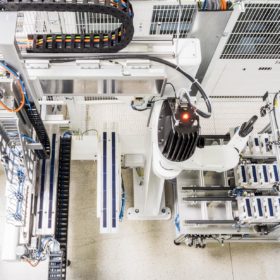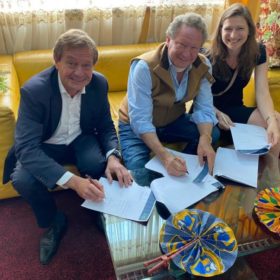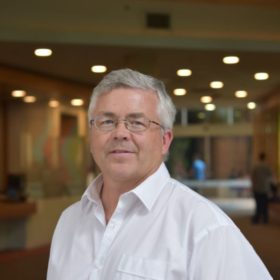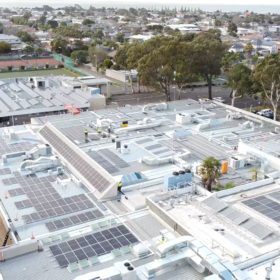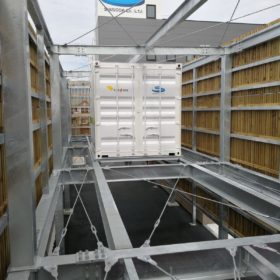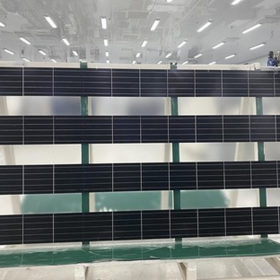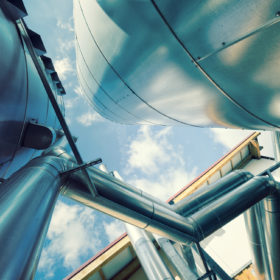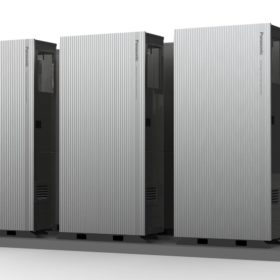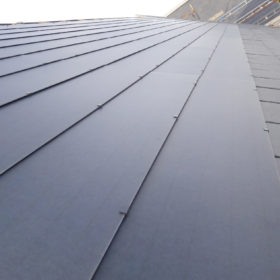New ‘matrix’ layout for shingled solar cells
German equipment supplier M10 and research institute Fraunhofer ISE will unveil a new prototype stringer for shingled module layouts at the Intersolar Europe trade show later this week. Employing an offset layout for the shingles, the approach promises a relative efficiency gain of up to 6%, compared to a conventional half-cell module.
Fortescue eyes 1 GW solar PV module manufacturing plant
Fortescue Future Industries has revealed plans to develop a 1 GW solar PV module manufacturing plant in Australia after confirming it had acquired a 60% stake in Netherlands-based renewable energy specialists High yield Energy Technologies Group.
Doping delivers improved performance for perovskite solar cells
With some of the world’s largest solar PV module manufacturers warning of looming panel shortages, Australian researchers have declared a new generation of cheap, sustainable and efficient solar cells is now a step closer.
City council powers ahead with 4 MW virtual power network
Victoria’s Hobsons Bay City Council is powering ahead with plans to establish a virtual power plant, confirming the installation of a combined 4 MW rooftop solar PV system across more than 40 council-owned buildings has begun in earnest.
Vanadium redox flow batteries with purported LCOS of $0.10/kWh
Singapore-based VFlowTech has secured funds to scale up manufacturing of its vanadium redox flow batteries. The company currently offers three modular products that can be scaled to multi-megawatt-hour systems.
Vietnamese manufacturer unveils PV module for agrivoltaics
Vietnamese manufacturer Irex has announced a new glass-glass solar panel with a power output of 265 W and a power conversion efficiency of 18.1%.
Blue hydrogen and blended pipelines: the prospects of a like-for-like transition
On Monday, an Australian–Japanese consortium announced plans to potentially develop a $1 billion plus ‘low emissions’ hydrogen project in Western Australia. The announcement was preceded by a year of gas companies loudly declaring schemes to blend hydrogen into their pipelines. Clearly, many powerful Australian are putting their money on a like-for-like transition. pv magazine Australia spoke to hydrogen experts Andrew Horvath and Scott Hamilton about how they see the hydrogen wave evolving, and why a clean swap is unlikely.
‘Carbon negative’ hydrogen & ammonia hub plan partially unveiled for Bundaberg
Plans for a $400 million green hydrogen and ammonia hub in Bundaberg on Queensland’s coast were partially released on Tuesday, with Clean Holdings’ chief executive Ken Mathews telling pv magazine Australia another major project partner is to be announced shortly. As it stands, the project will use hydrogen technology from the newly minted CAC-H2 to gasify agricultural waste from the region and separate out the hydrogen in a process the company’s energy CEO described to pv magazine Australia as “greener than green”.
Panasonic launches 5 kW fuel cell system for commercial applications
The system has dimensions of 834×417×1,766 mm and weighs 205 kg including the design panel. It achieves an electrical efficiency of 56% and can be connected with a hot water storage unit.
Solar tile with 14.2% efficiency from Denmark
Dansk Solenergi ApS has developed a 13.6 kg tile that can be used for both new buildings and building renovation. The device is currently being produced in Denmark, where the company operates a 40 MW line.
